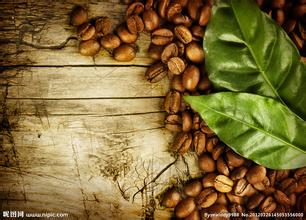Introduction to the description of taste and flavor of Colombian Jindio coffee beans
Colombia Golden Dior Coffee Bean Taste Flavor Description Origin Introduction
Colombia's favourable climate provides coffee with a true "natural pasture". Coffee trees in Colombia are mainly cultivated in the Andes mountains, on steep slopes up to 1,300 meters above sea level, where the annual temperature is about 18 degrees Celsius, the annual rainfall is 2000 to 3000 mm, the north latitude is 1 °-11 ° 15, the west longitude is 72 ° -78 °, and the specific altitude range can exceed 2.000 meters. By a particular combination of various factors, latitude, altitude, soil, plant origin of species and variety of coffee making in coffee growing areas of Colombia, climate in coffee growing areas and rain patterns resulting from dual paths of tropical convergence, changing topography throughout the day, luminosity, favorable temperature ranges throughout the year, distribution of moderate and rainwater, and some common cultural practices including selective harvesting and transformation processes, including washing and drying. Very suitable for coffee growth, mild climate, humid air, and can be harvested regardless of season
Regarding Colombia coffee, the first thing that comes to mind is the Golden Triangle of Coffee, which is collectively known as the Coffee Triangle by Caldas, Quindío and Risaralda provinces. It produces the best coffee in the world and is the source of Colombia coffee aroma.
Quindío-Cordillera is a region located in central Colombia, between the western and central Corteira mountains of the Andes. The vast expanse here, the great Antioquia people with their modesty, diligence and continuous progress, working in the mountains, created the treasure here-Quindío coffee. The mountains are both a challenge and a protective barrier. They are the founders of coffee culture, and with their belief in inheriting ancient methods, their culture prevails in the triangle and even the world.
The high altitude cultivation environment, coupled with suitable climatic conditions, makes the coffee in Quindío region emit a strong aroma of fresh red fruits, and the inheritance of ancient methods is not only the precipitation of time, but also the aroma of red wine. Medium-high acidity and medium body, such a balanced taste with lingering flavor, only the deposition of time can create such natural
Colombia coffee is divided into more than 200 grades, coffee is very regional. Colombia beans are SUPERMO, followed by EXCELSO; however, specialty coffee above 18 beans (18/64 inches in diameter) can only be included in specialty coffee. Colombia coffee has a balanced flavor and a smoother taste, just like a gentleman in coffee. It has a wide range of producing areas, but the coffee in the central mountains is the best and the texture is thick. The most famous producing areas are Medellin, Armenia and Manizales, which are commonly referred to as "mam". The taste of "narino" is delicious and the quality is very good. Starbucks, which sells specialty coffee, is said to have exclusive rights to "narino supermo" coffee beans, which are common in their chain stores

Important Notice :
前街咖啡 FrontStreet Coffee has moved to new addredd:
FrontStreet Coffee Address: 315,Donghua East Road,GuangZhou
Tel:020 38364473
- Prev

Introduction to the region where varieties are produced by the method of flavor description of South Minas Coffee in Brazil
Brazilian South Minas Coffee Flavor description, taste characteristics treatment, variety introduction grinding: in order to blend with water, coffee made the greatest sacrifice to pieces. Before brewing coffee, the beans must be ground into fine grains to increase the contact area between water and coffee in order to extract the delicacy. In fact, the bean grinder is more important than the coffee machine. At present, most people choose sawing.
- Next

Ethiopian coffee bean story features, historical flavor, description of origin culture
Ethiopian coffee bean story features, historical flavor description, origin culture, Ethiopian intellectual property bureau director Getachew Mengistie bluntly pointed out that farmers sell raw beans for $1.45 a pound, while Starbucks sells for $26 a pound in the United States, a price difference of 18 times. The reason is that Ethiopia does not know how to use intellectual property rights to create value for farmers.
Related
- Detailed explanation of Jadeite planting Land in Panamanian Jadeite Manor introduction to the grading system of Jadeite competitive bidding, Red bid, Green bid and Rose Summer
- Story of Coffee planting in Brenka region of Costa Rica Stonehenge Manor anaerobic heavy honey treatment of flavor mouth
- What's on the barrel of Blue Mountain Coffee beans?
- Can American coffee also pull flowers? How to use hot American style to pull out a good-looking pattern?
- Can you make a cold extract with coffee beans? What is the right proportion for cold-extracted coffee formula?
- Indonesian PWN Gold Mandrine Coffee Origin Features Flavor How to Chong? Mandolin coffee is American.
- A brief introduction to the flavor characteristics of Brazilian yellow bourbon coffee beans
- What is the effect of different water quality on the flavor of cold-extracted coffee? What kind of water is best for brewing coffee?
- Why do you think of Rose Summer whenever you mention Panamanian coffee?
- Introduction to the characteristics of authentic blue mountain coffee bean producing areas? What is the CIB Coffee Authority in Jamaica?

